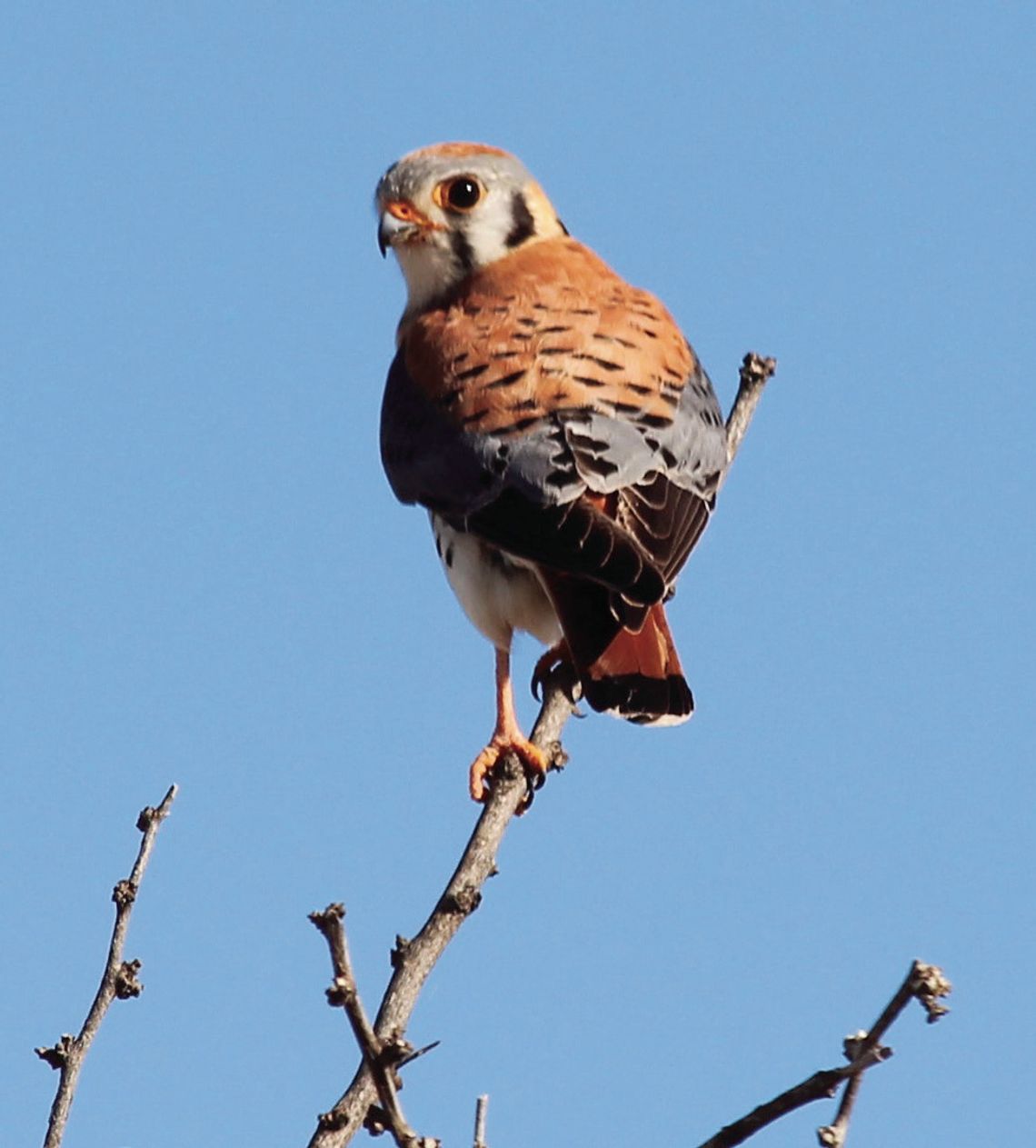The group of magnificent birds known as raptors are renowned for many things, including their diet, their flight, and their size.
The wingspan of most raptors is over 3 feet, and some have wingspans of 7 feet or more. But here in Texas, we happen to have a small raptor who, by very definition, contradicts the “everything is bigger in Texas” mantra, and that bird of prey is known as the American Kestrel.
The American Kestrel is readily spotted along roadways throughout the state, depending on the season, as it perches on high-wires and fences. It seems to prefer rolling plains and grassy areas, although it will utilize just about any open area that is larger than an acre or two. In all but the Rio Grande Valley, where northern populations tend to overwinter, it can be observed year-round throughout the remainder of the state. Outside of Texas it may be seen throughout the continental United States northward as far as trees occur and southward to southern Mexico.
Adult male American Kestrels are quite stunning in coloration. The head is blue-gray with a red-orange cap while the face is white with 2 black vertical bars on either side of the large, black, yellow-rimmed eyes. The breast is buff colored and is spotted with numerous black dots.
The back and wings are colored like the head; the back is red-orange and the wings are blue-gray. Both areas are adorned with black barring. The wings are elongated and pointed, tipped with black, and the tail is red-orange and lacks any barring.
Like most animals (other than humans), female Kestrels are not nearly as audacious with its coloring. While the head is colored and patterned similarly as the male, the breast area is pale with brown spots, while the back and wings lack the red-orange and the blue-gray coloration.
Whereas most females are simply decorated with a bit less “pizzazz” than their opposite sex counterparts, they are still quite attractive in their own right.
As previously mentioned, this falcon species is small by raptor standards. The body length of large adults barely reaches 1 foot as the wingspan is merely 2 feet across.
The majority of the time, this avian species prefers to live a solitary life, although many individuals will often be seen perching in areas of optimal hunting. It preys primarily on small rodents such as field mice and large insects such as Lubber Grasshoppers. It will occasionally hunt and feed upon small reptiles, amphibians, and even smaller songbirds; the latter group makes up an insignificant percentage of its diet.
It is a monogamous species, and the males court potential mates by catching prey items, bringing it to the female and feeding her while she is in mid-flight.
Nesting is solitary, and the nest structure is very feeble with little to no nesting materials utilized.
Many times, holes in trees, indentations in walls or on bridge support ledges are exploited. The 3-7 eggs vary in color from buff white with large brown blotches to light pink decorated with the same blotches to simply unmarked cream-colored. The eggs, as to be expected, are also small; most are just over 1 ¼ inches in length.
The eggs are incubated by the female for approximately 1 month, and the nestlings will remain in the nest, cared for by the mother, for almost another month. Most populations will brood 1 nest annually, although some populations in the southwest will occasionally raise 2 broods.
Studies have shown that the population dynamics of this astoundingly beautiful falcon to be mostly stable; only the populations in the northeast have experienced any decline over the past serval decades. Watch for this species as you travel in open areas, one diagnostic behavior that this species employs is the bobbing of its long tail while perched.





















